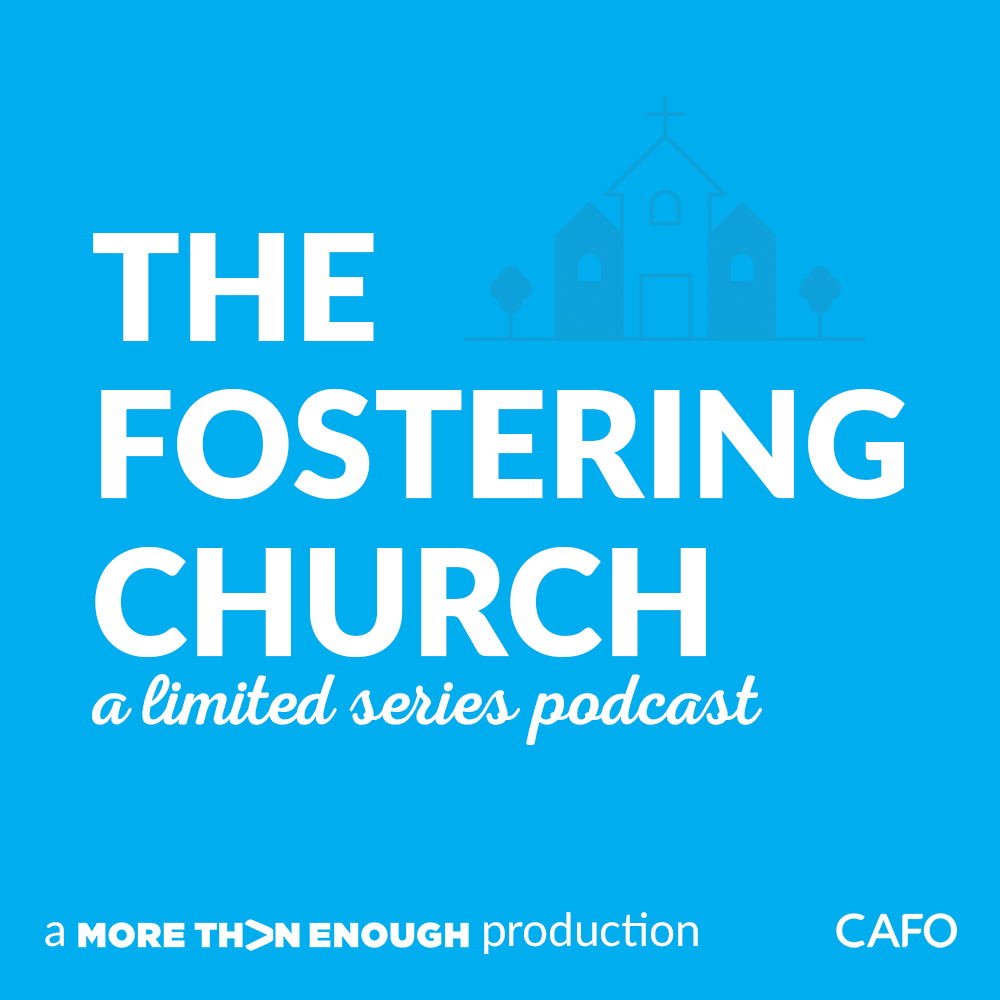Prayer
No spiritual movement in history has ever been started apart from prayer and absolute dependence on the Lord. Similarly, we believe more than enough for children and…

The needs in foster care can feel overwhelming at times; and so can the responses necessary to meet those needs.
With so many options – from recruiting new families to supporting those caring for children, trauma training, volunteer recruitment, parenting, discipleship, personal health and more, it’s hard to know what areas of ministry to focus on and what to do in order to be as effective in those areas as possible. This is where many church ministries struggle.
If you want more clarity and confidence in your foster care ministry then this seven-part series on The Fostering Church is for you.
This limited series is specifically designed to help you grow your church’s foster care ministry – no matter where you are on the journey. In each episode you’ll hear Jason Johnson and Jason Weber talk with a real-life church ministry leader about some foundational elements of what it means to be a “fostering church”. You’ll gain insight on where to focus your efforts and the encouragement you need to help you take your next best steps forward.
Listen, rate, and review wherever you get your podcasts.
The Bible says that zeal without knowledge can be “dangerous.” (Proverbs 19:2) Those are some strong words suggesting that it’s entirely possible for our passion…
No one can walk this journey of foster care alone. They shouldn’t have to either. However, the natural trajectory for foster parents is to at…
We’re not all called to do the same thing, but we are all capable of doing something. Everyone can do something! This truth is probably…
The words we say are important. So is how we say them, when we say them and to whom we say them. They truly have…
Encouraging more people in your church to get involved in foster care can feel daunting. The opportunities are endless, the need is massive and sometimes…
Recruitment and discipleship in a church is first and foremost about providing easy on-ramps for church members to get engaged in meaningful foster care-related ministry. While recruitment is often thought of in terms of courting potential foster and adoptive parents, this is only a small piece of a healthy recruiting strategy. The question to ask here is “have we provided a clear path in our church for everyone to do something?”
Often, when people think of communications in a church related to foster care, they immediately think of “up-front” announcements and sermons. While these two things can be a vital part of your church’s communications strategy, having healthy communications isn’t dependant on these alone. Ultimately, communication is about clarity. Are there multiple things in place that make it clear to church members how they can get involved in the foster care-related initiatives that your church offers?
In addition to the relational and spiritual support discussed in the previous section, financial and physical support is a critical part of a vibrant foster care ministry. Children and families have numerous tangible needs and the church is in a unique position to provide for those needs with an agility that is sometimes difficult for the local foster care system, which is overburdened and under-resourced. This is one of the simplest ways for anyone in a church to get involved in caring for children and families in your church and community.
We were intended to live in vibrant community with others. While this is true for everyone, the consequences of living in isolation can be especially devastating for families who are caring for children who have experienced trauma. The church is an environment uniquely suited to provide this kind of support to those within its walls and to those in the surrounding community. When a church is intentional about offering this kind of support to families that are caring for children in foster care, not only do the families thrive, but the church experiences a unique richness and unity that we were all created for.
One of the most important characteristics of a thriving church foster care ministry is a leadership structure that is sustainable. Any ministry of the church will struggle if it does not have leadership that is consistent, connected, and capable. This is particularly important in foster care ministry because most potential foster care ministry leaders are also often carrying a heavy load at home. Without structures in place to ensure continuity, keep leaders connected to church staff and develop their leadership skills, the ministry will likely struggle to maintain, much less grow.
Jonathan Edwards wrote, “There is no way that Christians, in a private capacity, can do so much to promote the works of God and advance the kingdom of God as by prayer.” Your goal as a church ministry should not simply be to “do a little more.” Instead your goal as a church is be a catalyst for movement in the community where God has placed you . . . and no spiritual movement in history has taken place apart from prayer. The children and families in your community need you and your church to be praying for them. There are structures that every church can put into place to ensure that this occurs.
